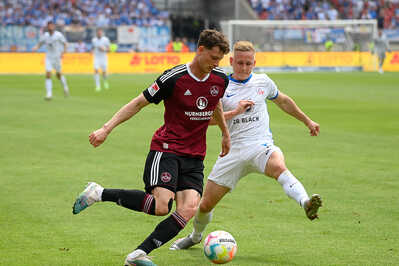Notifications
Clear all
Topic starter May 22, 2023 12:26 pm
So far I have never taken soccer in my hole photographic life, Last week end I was invited to take photos at the second German soccer league in Nuremberg, where I live, So I had a little clue how to take soccer photos. On the field I started lightning-fast learning and raised shutter speed from a 1/800s (I was thinking this should be enough) to 1/2500s (which was enough). I used a Nikon D6 and the Nikon 200-500/f5.6 with f5.6. ISO was automatically. This is one picture I took (Nuremberg is red-black shirt).
https://www.allmondo.com
PRG Lagarde reacted
